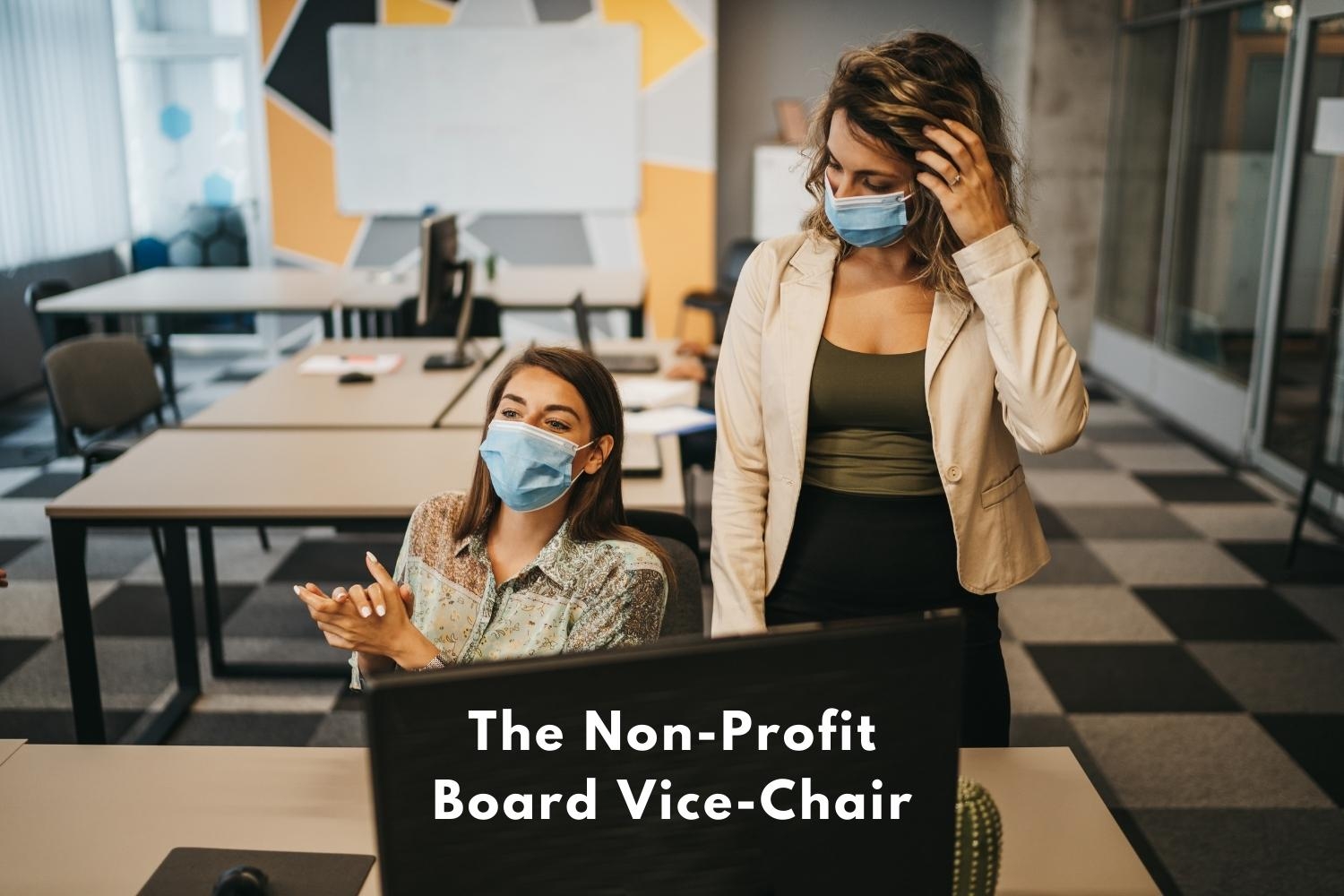The Role of a Non-Profit Board Vice-Chair

A non-profit board has many tasks to handle, and if there is no paid staff team, that list can become quite long. While the Board Chair is the leader of the board, the job is usually too much for one person. That’s where the role of Vice-Chair (Vice-President, etc.) becomes important.
The level of responsibility held by the Board Chair is the very reason why the position of Vice-Chair is so critical. If the Board Chair is unable to perform the duties of the position, such as being away for a meeting, the Vice-Chair steps in to help. If the Board Chair is responsible for more tasks than can be handled, again, the Vice-Chair steps in to help. The Vice-Chair is a vital position to ensure the non-profit is never without board leadership.
When designing the role of a non-profit Board Vice-Chair, it is important to consider not only the work that the position will handle, but also the succession plan for the Chair.
Vice-Chair Duties
While the Board Chair leads the board, the bulk of the work away from board meetings, is to work with the paid Executive Director (if there is one), to ensure the organization is meeting the strategic priorities. That leaves a gap for someone to work a little more with board members themselves. That’s often where a Board Vice-Chair can shine.
The Vice-Chair monitors board training, ensuring everyone knows the policies, knows where to find them, attends meetings, and completes evaluations. The Vice-Chair assists the Chair to build a board team that is trained, willing, and able to do the work of a non-profit board.
The Vice-Chair will often help board members get to know each other. That might be anything from modeling positive behaviour at meetings, to arranging social events. The Vice-Chair assists the Chair to build a board that is a positive and safe place for healthy discussion and debate.
The Vice-Chair assists the Chair by sharing the workload. This piece is unique for each non-profit. The Chair and Vice-Chair might split up duties, such as to lead different board committees. For example, one might lead the Governance Committee and the other lead the Nominations Committee. The nice part is there are no hard rules. The Chair and Vice-Chair can play off each other’s strengths to handle work duties and avoid an imbalanced workload.
The Chair and Vice-Chair can play off each other’s strengths to handle work duties and avoid an imbalanced workload.
Board Succession
One of the key roles of the Vice-Chair is to take over for the Board Chair when needed. This is seen most often when a Vice-Chair leads a board meeting because the Chair is unable to attend. It is helpful for the board to have someone with the skills to easily step into leading a board meeting and maintain the policy compliance and efficiency that might be missing, if the more experienced Chair can’t attend.
The Vice-Chair will usually gain the experience to lead a board meeting by having specific pieces of a board meeting agenda already assigned to them to lead in meeting discussion. That experience will make it very easy for a Vice-Chair to lead the entire meeting, if needed.
Board succession can also mean there is a need for someone to permanently step into the role of Board Chair when the Chair leaves or retires. This is an area where I am seeing a major shift in the non-profit world. While some organizations will make it very clear that the role of Vice-Chair will automatically become the Chair at some point, other non-profits are no longer willing to follow that model.
The position of Board Vice-Chair has many features that are unique to the job. Many board members will actively seek out the position of Vice-Chair because they enjoy the work with fellow board members, and they have no real interest in becoming Chair. A newer way to look a Board Chair succession is to select a board member with the right attributes for the role, not simply because they are already holding the Vice-Chair position.
A newer way to look a Board Chair succession is to select a board member with the right attributes for the role, not simply because they are already holding the Vice-Chair position.
…
The purpose of a non-profit Board Vice-Chair is to support the work of the Board Chair, by splitting the workload and being ready to step in as needed. When a non-profit clearly defines the roles of Chair and Vice-Chair, they will be much more successful in filling both positions. Taking away the surprise factor and outlying how work duties will be shared will ensure anyone interested in either position will know exactly what is expected of them in the role.
Every non-profit will have a Board Vice-Chair (or Vice-President). To ensure your non-profit has a successful Board Vice-Chair, 2 areas need to be addressed.
- Do you have job descriptions for your Board Chair and Vice-Chair? To get started defining the roles of each position, look at the work each position is handling right now. Ask yourself how the workload is being shared. Get the results written in your board governing policy, for the way you are doing things right now. Having job descriptions written down is a great first step. You can make changes later.
- At your next board meeting discuss if the position of Vice-Chair is expected to step into the position of Chair, or if a new Chair will be chosen from existing board members. Again, record your answers in board governing policy, and remember, you can change it later if need be.
When a non-profit needs someone to support the Board Chair, a well-defined Vice-Chair role can lighten the workload and ensure the organization is never without board leadership. Thanks for taking the time to read my ideas. My mission is to take the mystery out of running a small non-profit.
If you know someone who is part of a non-profit board, and wants to become more involved in board leadership, why not grab the link, and share it with them. Let’s work together to make the Board Vice-Chair position as successful as possible.
-Christie
…
Hi, I'm Christie Saas, former board member, current Executive Director, and non-profit volunteer. I remember well, those early years when I lacked the training, the confidence, and the work-life balance to focus on becoming the best non-profit leader I could be.
Fast-forward past many bumps in the road, lessons learned, and you’ll find me still in the trenches, but a little wiser, a little calmer, and a whole lot happier. I love my work and I want to help you love yours too.
I created ChristieSaas.com to give you tools, tips, and templates to remove the mystery of learning to run a small non-profit. If you’re a brand-new non-profit leader, or a little more seasoned, someone who’s looking to make a meaningful contribution and still have time for a full life away from the job, you’re in the right place.
© Christie Saas 2022 All Rights Reserved
…
Want to learn more?
Start with one of my free resources.


